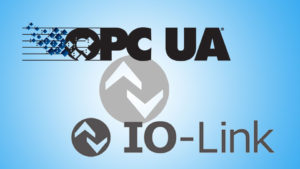As this requires a high degree of digitization, Industry 4.0 can only be successfully implemented if industrial communication systems are innovated, taking into account the relevant requirements. Big Data is served by various sources, in particular those that deliver data during production with the participation of sensors and actuators. On the one hand, this requires a higher bandwidth with which the data generated in the production environment can be transported to the cloud. On the other hand, standardized data formats are required for an efficient and barrier-free exchange of information.
The experts at PROFIBUS & PROFINET International (PI) have already started a number of innovation projects that aim to increase both the bandwidth and the development of PI technologies from a communication-related to an information-oriented technology portfolio.
Ethernet for Sensors
 The already available integration of TSN (Time Sensitive Networking) basic functions in PROFINET provides higher bandwidths due to the implicit path to Gigabit speeds, and forms the basis for the required interoperability of so-called convergent networks. In process automation, there is a major innovation step with Ethernet-APL (Advanced Physical Layer), which significantly increases the bandwidth available today compared to HART or serial fieldbuses. In addition, the use of Ethernet at the sensor level will enable a much more efficient exchange of information due to the associated standardization of the protocol. Ethernet-APL uses SPE (Single Pair Ethernet, IEEE Std 802.3-2019 (10BASE-T1L)), which enables cable lengths of up to 1000m.
The already available integration of TSN (Time Sensitive Networking) basic functions in PROFINET provides higher bandwidths due to the implicit path to Gigabit speeds, and forms the basis for the required interoperability of so-called convergent networks. In process automation, there is a major innovation step with Ethernet-APL (Advanced Physical Layer), which significantly increases the bandwidth available today compared to HART or serial fieldbuses. In addition, the use of Ethernet at the sensor level will enable a much more efficient exchange of information due to the associated standardization of the protocol. Ethernet-APL uses SPE (Single Pair Ethernet, IEEE Std 802.3-2019 (10BASE-T1L)), which enables cable lengths of up to 1000m.
IO-Link via SPE
Factory automation already has a protocol for sensor communication with IO-Link, which has been established in the market for many years. Today it enables cable lengths of up to 20m and supports data rates of up to 230.4 kbaud for IO-Link device – master communication. The IO-Link experts recognized the potential of SPE for IO-Link and started an activity in which the new possibilities of SPE for the IO-Link ecosystem could be investigated. The team of experts in strategic marketing, product management, and technology aims to develop a concept that will serve as the basis for a strategic decision regarding the use of IO-Link via SPE. The individual tasks include defining requirements for IO-Link via SPE, developing a market position, and determining potential and opportunities, as well as the effects on IO-Link.
To implement the second factor, PI experts, in cooperation with other organizations, have defined open and standardized semantics for the device description and the application-related data to be transferred. PI relies on OPC UA for horizontal communication between different controls and vertically to higher levels. The data itself is supplied by subordinate IO-Link and/or PROFINET networks. In most cases, this already works on the basis of the TCP/IP protocol, which has been available for years and can be coexist plainly in PROFINET networks.
OPC UA Companion Specifications
 The movement of data from PROFINET to OPC UA requires further standardization of data formats. This was done in close cooperation with the OPC Foundation. The result is the OPC UA PROFINET Companion Specification, in which an OPC UA Information Model for the representation of the standardized object model of PROFINET was defined. As a result, applications based on OPC UA services can access objects from PROFINET devices regardless of the manufacturer. Comparable information was specified in the OPC UA IO-Link Companion Specification. The content of the two documents was harmonized by the responsible teams before completion.
The movement of data from PROFINET to OPC UA requires further standardization of data formats. This was done in close cooperation with the OPC Foundation. The result is the OPC UA PROFINET Companion Specification, in which an OPC UA Information Model for the representation of the standardized object model of PROFINET was defined. As a result, applications based on OPC UA services can access objects from PROFINET devices regardless of the manufacturer. Comparable information was specified in the OPC UA IO-Link Companion Specification. The content of the two documents was harmonized by the responsible teams before completion.
Semantic Standardization
As a basis, Big Data requires a high degree of machine-processable, standardized information that is available across all companies and industries. So that this can be used as the basis for a machine-processable data flow across the various systems from the sensor to the cloud, the data already available today must be converted into clearly usable information with the help of semantic standards. In cooperation with eCl@ss e.V., the parameters defined in the specification documents by PI are being expanded to include semantic identifiers.
These measures support OT in its automation task by providing open, standardized real-time functions for horizontal communication in the field. The open, cross-level data models are a necessary prerequisite for seamless vertical data transfer to IT for efficient production control, monitoring, analysis and optimization in the Industry 4.0 era.

 Dr. Peter Wenzel
Dr. Peter Wenzel